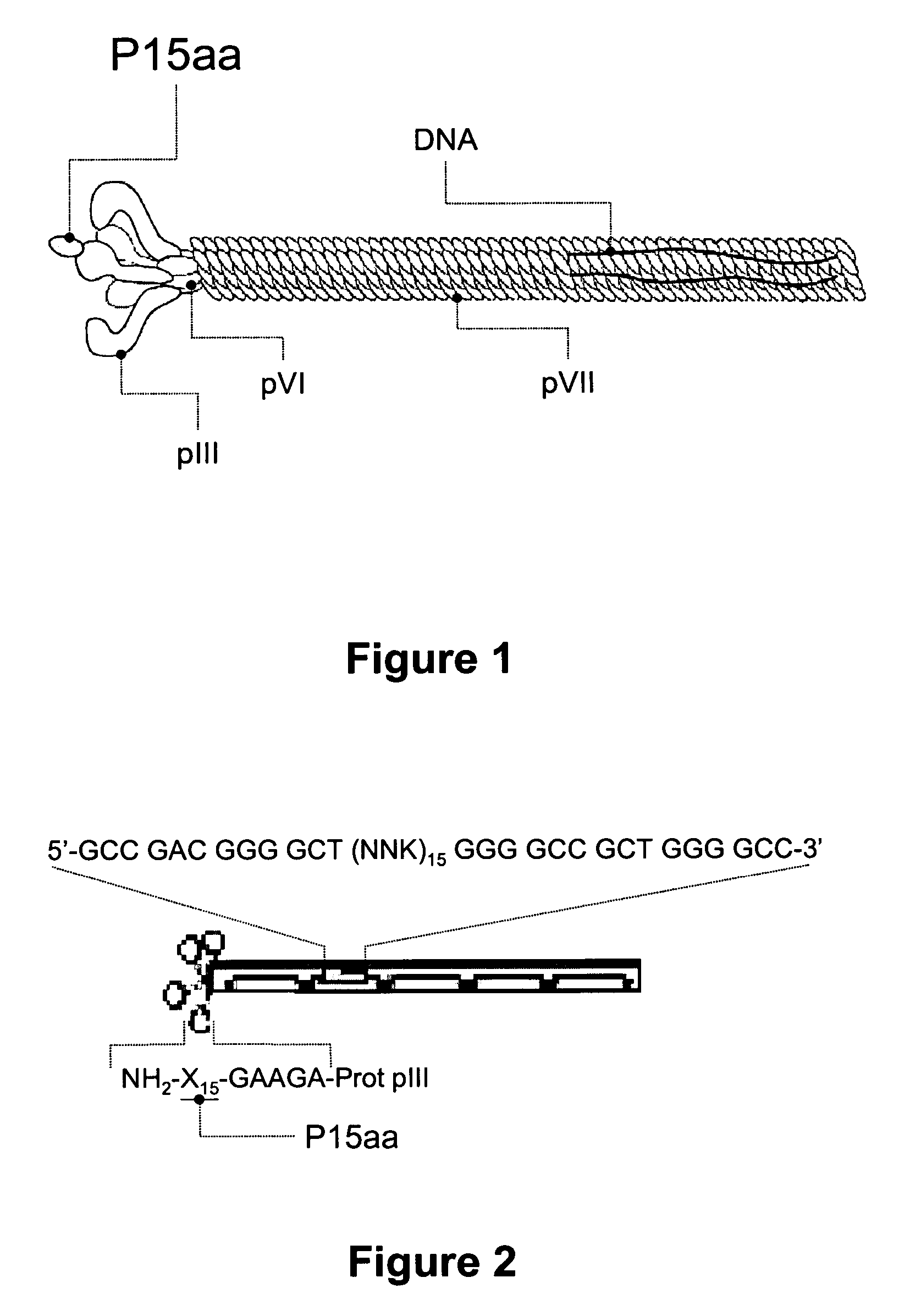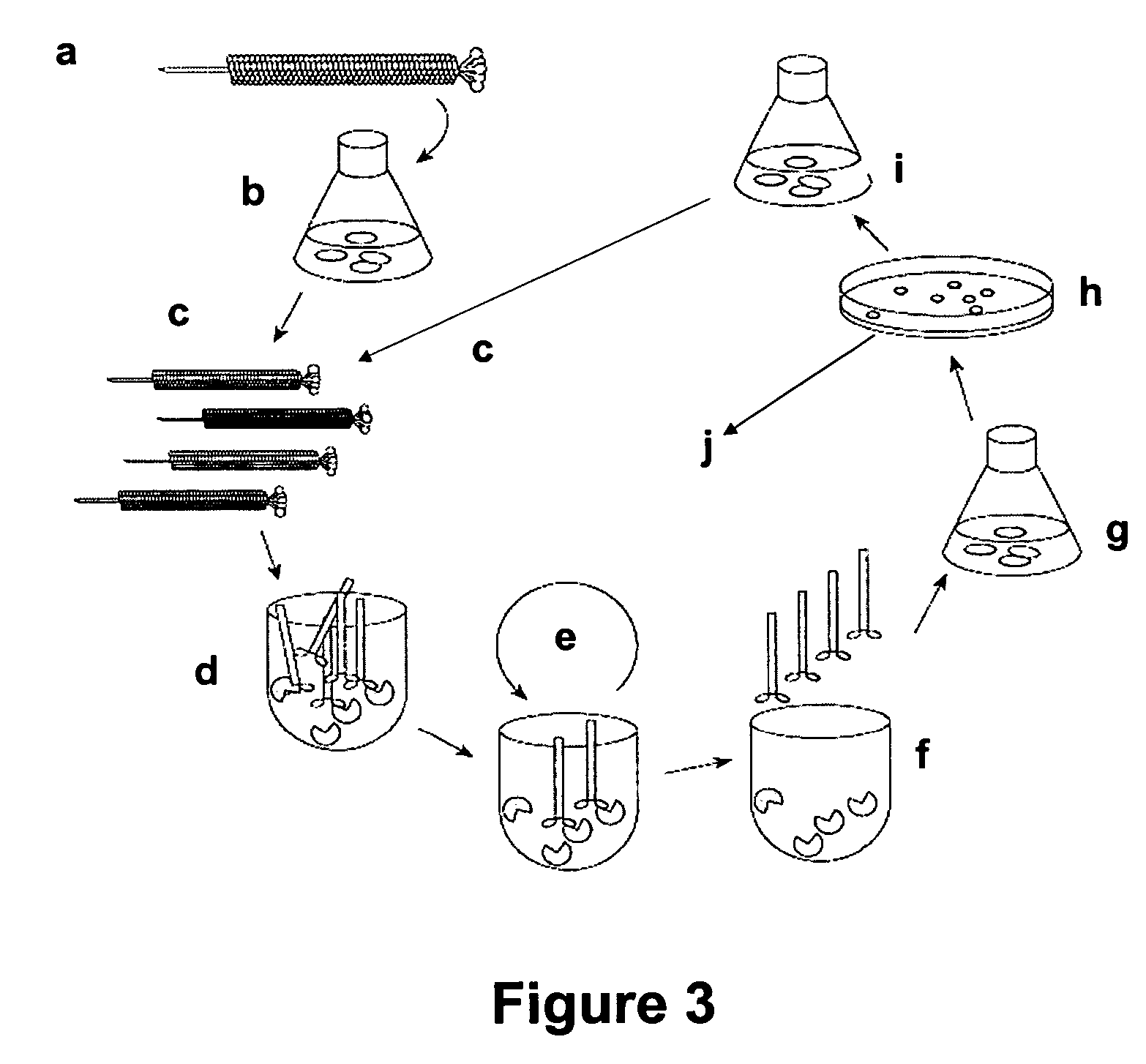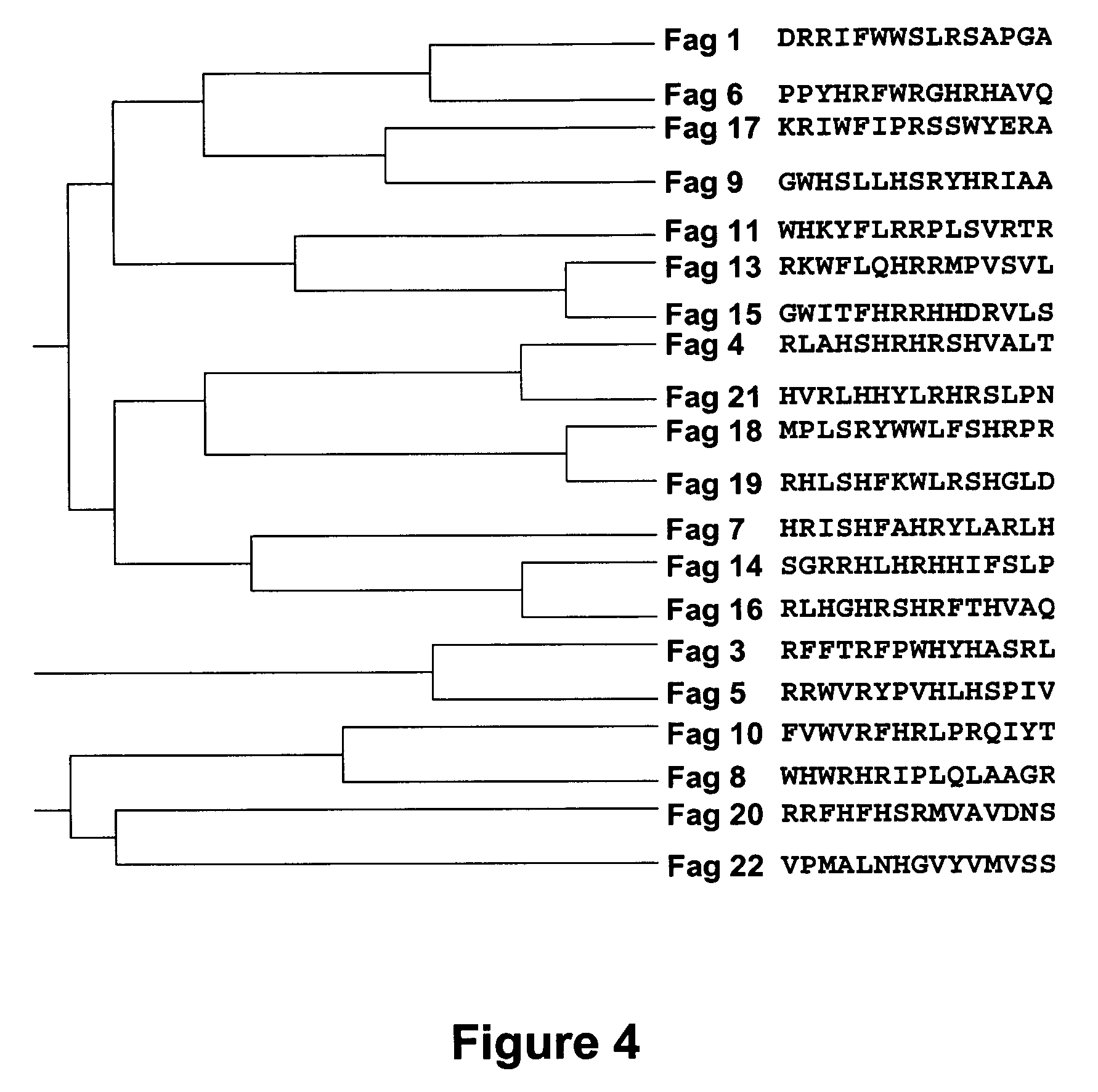Peptides with the capacity to bind to transforming growth factor β1 (TGF-β1)
a technology of transforming growth factor and peptide, which is applied in the field of peptides with the capacity to bind to transforming growth factor 1 (tgf-1), can solve the problems that the stability of immunoglobulin over time does not allow short-time control of the blocking activity of this cytokin
- Summary
- Abstract
- Description
- Claims
- Application Information
AI Technical Summary
Benefits of technology
Problems solved by technology
Method used
Image
Examples
example 1
Selection of Peptides that Bind to TGF-β1 Using a Phage-Displayed Peptide Library
[0061]In order to obtain sequences of 15 amino acids capable of high affinity binding to TGF-β1, and offering a possible inhibitory activity upon the biological activity of this cytokine, use was made of an in vitro selection technique based on technology developed from phage-displayed peptide libraries. These libraries comprise a plurality of filamentous bacteriophages (M13), each one containing a peptide genetically fused to a protein of the virus envelope—in this case bound to the N-terminal end of envelope protein pIII (FIG. 1). In this way the phage displays a 15-aa peptide at the surface of each one of the 5 copies of the surface protein pIII, whereas the DNA sequence encoding the peptide is contained within the phage. In the phage libraries, the sequence encoding the peptide originates from a sequence degenerated in each one of the 15 positions with the 20 natural amino acids, thus allowing the p...
example 2
Inhibition of in Vitro TGF-β1 Biological Activity by Using Peptides in Mv-1-Lu Cell Proliferation Assays
[0069]The cell line Mv-1-Lu (CCL-64, American Type Cell Culture, Va., USA) derives from mink pulmonary epithelium, grows as a monolayer, and responds to the presence of TGF-β1 by decreasing its proliferation (FIG. 5). Thus, the peptide-mediated inhibition of this cytokine is able to restore cell growth and reflects the capacity of the different peptides to inhibit the biological activity of TGF-β1 in vitro. The peptides tested were obtained by peptide synthesis, in accordance to conventional procedures (Merrifield R B. J Am Chem Soc 1963; 85:2149-2154; Atherton E et al. J Chem Soc Perkin Trans 1981; 1:538-546).
[0070]The Mv-1-Lu cells are cultured to confluence in complete medium [RPMI-1640 supplemented with L-glutamine, sodium pyruvate, antibiotics and 10% fetal bovine serum (FBS)] at 37° C. and in 5% CO2 in 162 cm2 bottles (Costar Corporation, Calif., USA). Following trypsinizati...
example 3
In Vivo Inhibition of TGF-β1 Biological Activity by Peptides Using a Model of Acute Liver Damage Induced by CCl4
[0076]Acute liver damage generates a cascade of effects and physiological responses, including elevations in the concentrations of TGF-β1. This elevation is responsible for the expression of the type I collagen gene, among others. In this model of acute liver damage, female Balb / C mice weighing 25 to 30 g, were orally administered a dose of 2 μl of CCl4 (per gram of body weight) dissolved in an equivalent volume of corn oil (volumetric ratio of 1:1). The control group received an equivalent volume of corn oil only, and the treated groups received (following the single oral administration of CCl4 in corn oil) 50 μg of peptide in 500 μl of 1% physiological saline solution in DMSO (dimethyl sulfoxide) every 24 h. After 72 hours all animals were sacrificed, and the liver samples were processed. To evaluate mRNA expression, liver tissue was frozen in liquid nitrogen and stored...
PUM
| Property | Measurement | Unit |
|---|---|---|
| concentration | aaaaa | aaaaa |
| concentration | aaaaa | aaaaa |
| concentrations | aaaaa | aaaaa |
Abstract
Description
Claims
Application Information
 Login to View More
Login to View More - R&D
- Intellectual Property
- Life Sciences
- Materials
- Tech Scout
- Unparalleled Data Quality
- Higher Quality Content
- 60% Fewer Hallucinations
Browse by: Latest US Patents, China's latest patents, Technical Efficacy Thesaurus, Application Domain, Technology Topic, Popular Technical Reports.
© 2025 PatSnap. All rights reserved.Legal|Privacy policy|Modern Slavery Act Transparency Statement|Sitemap|About US| Contact US: help@patsnap.com



